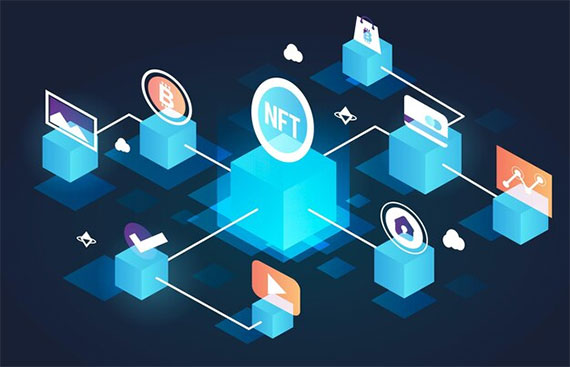Strategic Approaches to Blockchain Tools Risk Management

Blockchain technology has gained significant attention and adoption across various industries due to its potential to enhance transparency, security, and efficiency in digital transactions. However, along with its benefits, blockchain also introduces unique risks and challenges that require strategic management. In this article, we will delve deep into the world of blockchain risk management, exploring the intricacies of identifying and mitigating risks associated with this revolutionary technology. Exploring Immediate Urex can be a game changer for traders seeking educational resources. Get started with investment education right now!
Understanding Blockchain Technology
Overview of Blockchain Technology
Blockchain is a distributed ledger technology that records transactions across multiple nodes or computers in a secure and tamper-resistant manner. Each block contains a list of transactions, and they are linked together in a chronological chain.
Key Characteristics and Components
Blockchain technology is characterized by decentralization, immutability, transparency, and cryptographic security. Key components include nodes (participants in the network), blocks (containers for transactions), and consensus mechanisms (protocols for validating transactions).
Applications of Blockchain in Various Industries
Blockchain has found applications in finance, supply chain, healthcare, and more. It is used for cryptocurrency transactions, supply chain traceability, medical record management, and even voting systems.
Identifying Risks in Blockchain Technology
Types of Risks Associated with Blockchain
- Security Risks: Blockchain networks can be vulnerable to attacks, such as 51% attacks, where a malicious entity gains control of the majority of the network's computing power.
- Regulatory and Compliance Risks: As governments seek to regulate blockchain, businesses must navigate evolving legal landscapes to ensure compliance with local and international regulations.
- Operational Risks: Smart contracts can have coding errors or vulnerabilities, leading to unexpected outcomes. Network congestion and scalability issues can also disrupt operations.
- Reputational Risks: High-profile breaches or failures can damage an organization's reputation, leading to loss of trust and customers.
Real-World Examples of Blockchain Failures
Examples like the DAO hack and the Mt. Gox exchange collapse illustrate the real-world consequences of insufficient risk management in blockchain projects.
Strategic Risk Assessment
Risk Assessment Frameworks for Blockchain
Adopting established risk assessment frameworks, such as ISO 31000 or NIST's Cybersecurity Framework, can help organizations identify and prioritize blockchain-related risks.
Identifying Critical Points of Vulnerability
Identifying potential vulnerabilities within the blockchain network and its infrastructure is crucial. This includes assessing the security of smart contracts and wallet management.
Analyzing Risk Tolerance and Appetite
Organizations must determine their risk tolerance levels and establish risk appetite statements to guide decision-making. This ensures a balanced approach to risk management.
Risk Mitigation Strategies
Security Measures
- Cryptographic Techniques: Implementing robust encryption and cryptographic protocols enhances the security of blockchain transactions.
- Multi-Signature Wallets: Using multi-signature wallets requires multiple approvals for transactions, reducing the risk of unauthorized access.
- Consensus Mechanisms: Choosing a suitable consensus mechanism, such as Proof of Work (PoW) or Proof of Stake (PoS), can impact the security and decentralization of the network.
Compliance and Regulatory Compliance
- KYC (Know Your Customer) and AML (Anti-Money Laundering) Procedures: Implementing KYC and AML checks helps organizations comply with financial regulations.
- Smart Contracts for Regulatory Compliance: Smart contracts can automate compliance tasks, reducing the risk of human error.
Operational Risk Mitigation
- Supply Chain Integration: Integrating blockchain into supply chain processes enhances transparency and traceability, reducing operational risks.
- Scalability Solutions: Implementing scalability solutions, like layer 2 solutions or sharding, can address congestion issues in blockchain networks.
Reputation Management
- Transparency Initiatives: Promote transparency by making key information about the blockchain project available to stakeholders.
- Handling Security Breaches: Develop incident response plans to efficiently manage and recover from security breaches, minimizing reputational damage.
Best Practices in Blockchain Risk Management
Continuous Monitoring and Auditing
Regularly monitor the blockchain network for suspicious activities and conduct audits to identify vulnerabilities.
Disaster Recovery and Contingency Planning
Prepare for the unexpected by creating disaster recovery and contingency plans to ensure business continuity.
Stakeholder Education and Training
Educate employees, partners, and users about blockchain risks and best practices to minimize human errors.
Collaborative Approach to Risk Management
Collaborate with industry peers, regulatory bodies, and experts to share insights and best practices for blockchain risk management.
Case Studies
Examine successful blockchain risk management strategies employed by organizations that have navigated the challenges effectively. Learn from past failures to avoid common pitfalls.
Future Trends in Blockchain Risk Management
Evolving Threat Landscape
Stay updated on emerging threats and vulnerabilities in the blockchain ecosystem to proactively adapt risk management strategies.
Regulatory Developments
Monitor the evolving regulatory landscape to ensure compliance with changing rules and regulations.
Innovations in Risk Management Tools
Explore innovative risk management tools and technologies that can enhance security and risk mitigation in blockchain.
Conclusion
In conclusion, effective risk management is essential for organizations leveraging blockchain technology. By understanding the unique risks associated with blockchain, implementing strategic risk assessment frameworks, and adopting risk mitigation strategies, businesses can harness the full potential of blockchain while safeguarding their operations and reputation. As the blockchain landscape evolves, staying informed about emerging trends and regulatory changes is paramount to maintaining a secure and compliant blockchain ecosystem.
